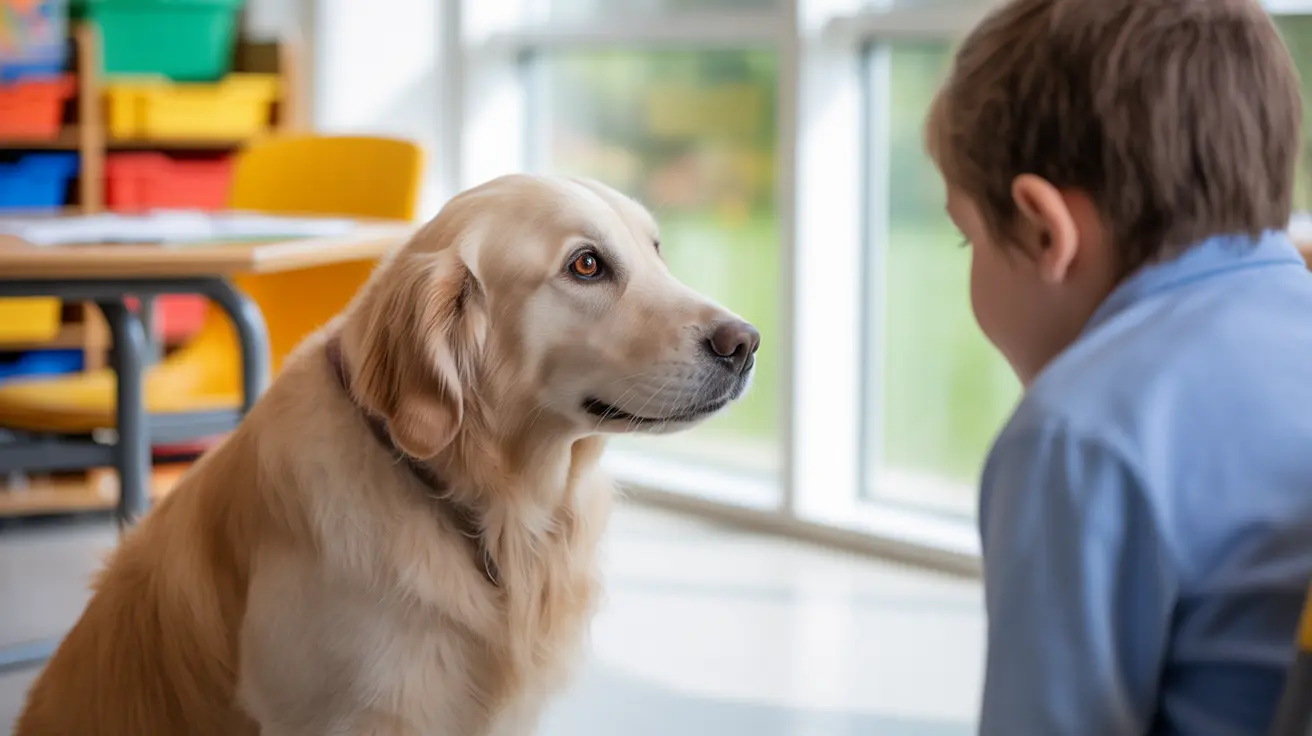The Power of Animal-Assisted Therapy for Neurodivergent Students
Animal-assisted therapy programs for disabilities have gained significant recognition in recent years, and for good reason. The unique bond between animals and children creates an environment where traditional barriers to learning often dissolve naturally. At North Florida Therapy School, students are experiencing firsthand how these therapeutic relationships can unlock potential that may have seemed unreachable through conventional methods alone.
The benefits of therapy dogs for children and other animals extend across multiple developmental areas. These programs typically focus on improving communication skills, enhancing social interaction, reducing anxiety, and promoting emotional regulation. For students with autism spectrum disorders, developmental delays, or other neurological differences, the non-judgmental presence of therapy animals creates a safe space for growth and exploration.
Benefits of Therapy Animals for Emotional Regulation
One of the most significant advantages of classroom animal therapy is its impact on emotional regulation. Many special needs students struggle with managing their emotions, particularly in structured educational settings. Therapy animals provide a calming influence that helps students develop better coping mechanisms and self-regulation skills.
The sensory development with animals aspect is particularly beneficial for children with autism or sensory processing disorders. The tactile experience of petting an animal, the rhythmic nature of an animal's breathing, and the predictable routines involved in animal care all contribute to improved sensory integration and processing.
Animal Therapy for Communication Skills Development
Perhaps one of the most remarkable outcomes of animal-assisted education programs is the improvement in communication skills. Children who may be reluctant to speak with adults or peers often find themselves naturally communicating with animals. This breakthrough frequently translates into improved verbal and non-verbal communication in other settings.
The program at North Florida Therapy School demonstrates how animal therapy for communication skills can serve as a bridge to broader social engagement. Students learn to express needs, emotions, and thoughts through their interactions with therapy animals, building confidence that carries over into human relationships.
Social Skills Enhancement Through Animal Interactions
Animal therapy for social skills development addresses one of the most challenging aspects of special needs education. Many students with developmental differences struggle with understanding social cues, appropriate interactions, and relationship building. Therapy animals provide a non-threatening way to practice these essential life skills.
Through structured activities involving animal care, feeding, and interaction, students learn responsibility, empathy, and cooperation. These lessons form the foundation for improved peer relationships and family dynamics, creating positive ripple effects throughout their lives.
Managing Animal Therapy for Anxiety in Children
For many special needs students, anxiety can be a significant barrier to learning and social participation. Animal therapy for anxiety in children has shown remarkable success in reducing stress levels and creating more conducive learning environments. The predictable, accepting nature of animal companions helps students feel more secure and open to new experiences.
Implementation and Safety Considerations
Successful animal-assisted therapy Florida programs require careful planning and professional oversight. Schools must consider factors such as animal selection, handler training, hygiene protocols, and accommodation for students with allergies or animal phobias. The North Florida Therapy School's success demonstrates the importance of comprehensive program design and ongoing evaluation.
Frequently Asked Questions
How does animal-assisted therapy help special needs students with communication?
Animal-assisted therapy creates a non-threatening environment where children feel comfortable expressing themselves. Students often speak to animals before they're ready to communicate with humans, building confidence and language skills that transfer to other relationships. The sensory and emotional comfort provided by animals can reduce communication barriers and anxiety.
What are the benefits of using animals in special education classrooms?
Animals in classrooms provide multiple benefits including improved emotional regulation, enhanced social skills, reduced anxiety, increased motivation to participate, and opportunities for sensory development. They also teach responsibility, empathy, and routine-building while creating positive associations with the learning environment.
How do schools implement animal therapy programs safely for students with allergies or fears?
Schools implement safety protocols including allergy assessments, gradual exposure programs for fearful students, proper hygiene procedures, designated animal-free zones, and alternative activities for students who cannot participate. Professional oversight ensures that all students can benefit from the program environment, even if not directly interacting with animals.






